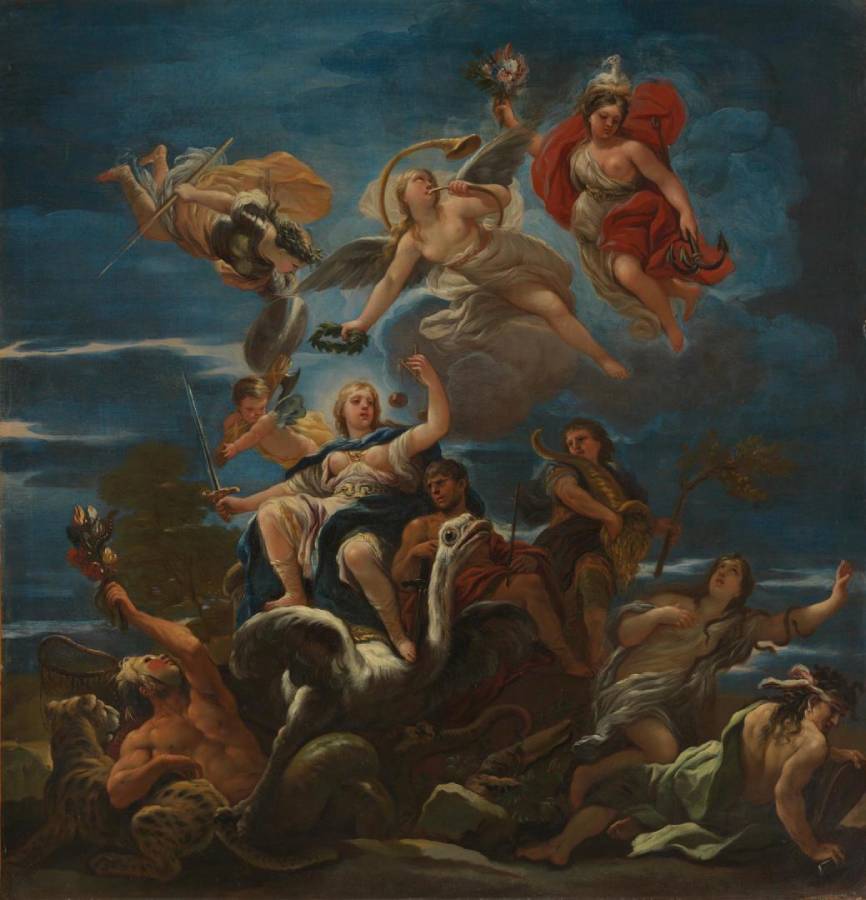Giordano, Luca (1634-1705)
Allegoria della Giustizia (Allegory of Justice)
early 1680s
Oil on canvas, 99.9 × 96 cm
National Gallery, London
This modello, or detailed oil study, is one of a group of 12 that Giordano made in preparation for the ceiling frescoes in the Palazzo Medici Riccardi in Florence in 1682–85 (ten of the modelli are in the National Gallery’s collection). This one corresponds with the group in the right corner of the barrel-vaulted ceiling, opposite the entrance of the grand Galleria and to the right of The Cave of Eternity.
The central figure represents Justice, one of the four Cardinal Virtues. These were first identified by the philosopher Plato, and later adopted by the Roman Catholic Church. One Virtue is depicted in each of the four corners of the Galleria and they form part of a continuous frieze of allegorical and mythological scenes. In the finished fresco, four of the Medici family depicted in the centre of the ceiling are also given attributes representing each of the Virtues.
Justice, carrying the scales and sword which are her traditional attributes, is borne by an ostrich. The connection between the flightless bird and justice was apparently first made by Raphael in his fresco in the Sala di Costantino in the Vatican Palace (1519–20). He seems to have been playing on ancient Egyptian beliefs that, after death, the fate of your soul was determined by weighing your heart against an ostrich feather.
To the right are Punishment, with his sword turned down, and Recompense, from whose cornucopia rewards pour out. In the left-hand corner, pinned down by the foot of the ostrich, is the masked and serpent-tailed figure of Deceit, who holds up a bunch of flowers in which a poisonous snake is concealed. Behind him is a net to ensnare the unwary. On the right are Strife, and Discord with his bellows. The flying figures above represent the rewards of Justice, from left to right: Order (with a shield and spear), Fame (winged and blowing a trumpet), and Security (holding an anchor and carrying a nest on her head, signifying that children may be reared in safety).
In the final fresco, the leopard against which Deceit leans is changed into a tiger. Giordano also altered the attitude of Justice so that she looks up towards Order instead of staring directly at her scales. He made similar changes to the postures of three of the four Virtues, presumably at the request of his patron, the Marquess Francesco Riccardi (only Fortitude keeps the same downward gaze as employed in the modello). The alterations to posture better suit the curvature of the ceiling and inject more energy and dynamism to the design, sending the eye up towards the centre of the room. (NG)
Modelli for the Palazzo Medici Riccardi:
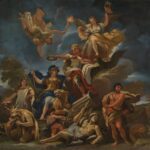 Giordano, Luca (1634-1705)
Giordano, Luca (1634-1705)
Allegoria della Fortezza
early 1680s
National Gallery, London
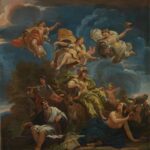 Giordano, Luca (1634-1705)
Giordano, Luca (1634-1705)
Allegoria della Prudenza
early 1680s
National Gallery, London
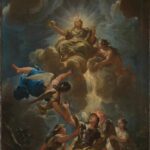 Giordano, Luca (1634-1705)
Giordano, Luca (1634-1705)
Allegoria della Sapienza Divina
early 1680s
National Gallery, London
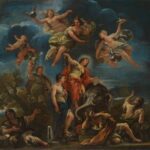 Giordano, Luca (1634-1705)
Giordano, Luca (1634-1705)
Allegoria della Temperanza
early 1680s
National Gallery, London
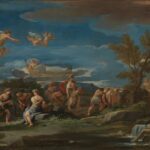 Giordano, Luca (1634-1705)
Giordano, Luca (1634-1705)
Allegoria dell’Agricoltura
early 1680s
National Gallery, London
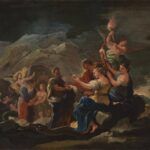 Giordano, Luca (1634-1705)
Giordano, Luca (1634-1705)
Antro dell’eternità
early 1680s
National Gallery, London
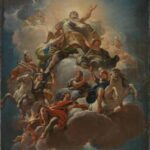 Giordano, Luca (1634-1705)
Giordano, Luca (1634-1705)
Apoteosi dei Medici
early 1680s
National Gallery, London
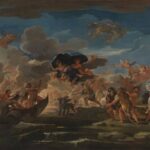 Giordano, Luca (1634-1705)
Giordano, Luca (1634-1705)
La barca di Caronte e il ratto di Proserpina
early 1680s
National Gallery, London
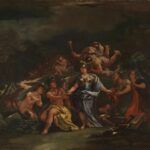 Giordano, Luca (1634-1705)
Giordano, Luca (1634-1705)
Minerva protettrice delle Arti e delle Scienze
early 1680s
National Gallery, London
This group of ten paintings was made by Giordano as a series of detailed oil studies (or modelli) for the ceiling frescoes in the Palazzo Medici Riccardi in Florence, which are among the artist’s finest achievements. The modelli are part of a set of 12 (the other two are in private collections).
Nine of the paintings relate to the ceiling of the highly ornate Galleria, built to house a precious collection of antiquities and function as a public reception room. The other is associated with the ceiling of the adjacent Library. The overall theme in the Galleria is the elevation of mankind through Wisdom and Virtue, using allegorical and mythological figures to represent different strengths and traits. It culminates in a centrepiece which presents the wealthy Medici family as the paradigm of both these qualities.
Giordano seems to have worked up these modelli to clarify his designs and may have presented them to his client, the Marquess Francesco Riccardi, for approval before the frescoes were executed. (NG)
